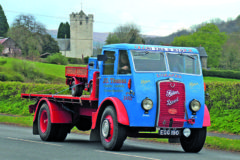A famous Ford 5000 tractor
Posted by Chris Graham on 27th May 2021
Jane and Stephen Brooks recount the tale of what became a famous Ford 5000 tractor, being the basis of what’s not a very collectible toy.
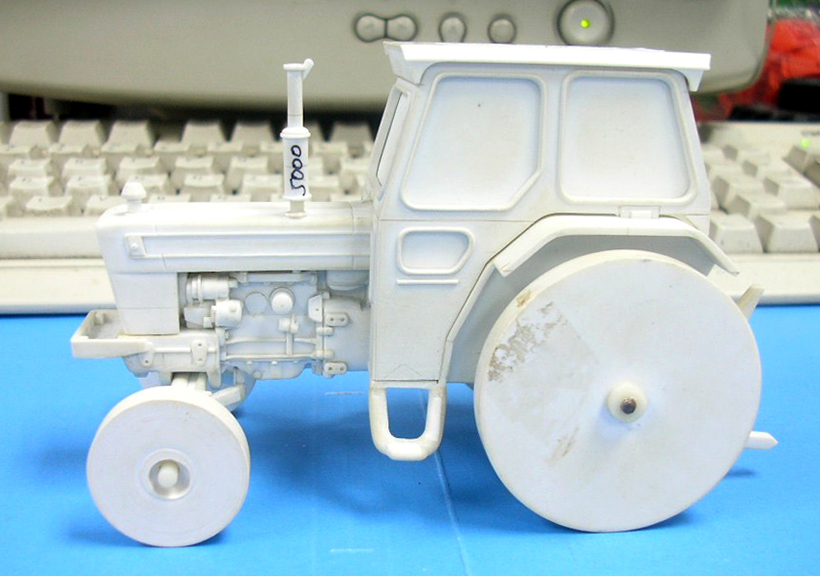
A famous Ford 5000 tractor: The white resin and plastic prototype Ford 5000 model, which was produced using information gathered from old brochures, sales particulars and careful measurements taken from actual tractors.
Britains started producing farm toys in 1921, now part of TOMY, Britains’ die-cast model tractors remain firm favourites, and its 2007 model of a Ford Force 5000 has become a must-have for collectors young and old.
Founder William Britain initially manufactured 1/32-scale toy soldiers from 1893, using a hollow casting process that he developed and patented. His toys soon became popular and, in 1907, the company was incorporated to become Britains Ltd.
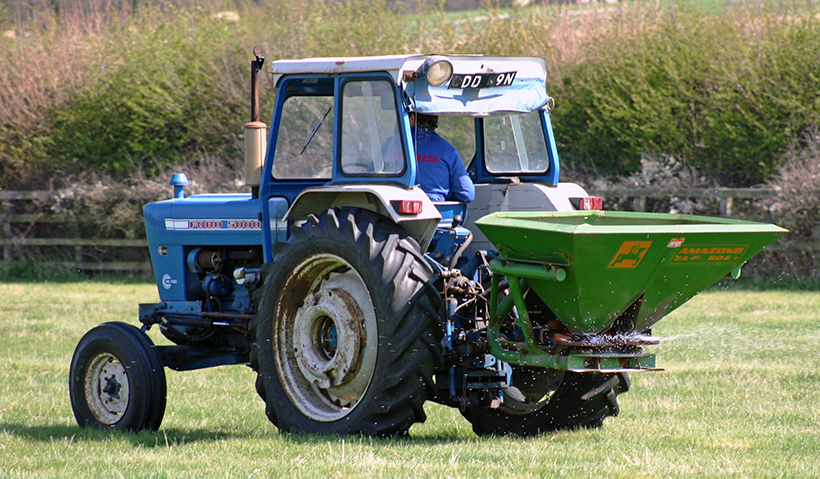
Here’s our Ford 5000 at work spinning-out fertiliser on our Warwickshire farm.
However, during the First World War, the popularity of military toys slumped and, as the war ended, the huge effort in the British countryside to feed the nation became a cause for celebration. Britains saw an opportunity, and turned its attention to farm-based models.
Home Farm arrives
Still at the original 1/32 scale, Britains’ Model Home Farm was introduced in the autumn of 1921. It included the first farm vehicle – a Tumbrel farm cart (the 4F) – together with 30 farm figures and animals, including a horse to pull the cart. It was an instant success, so buildings, trees, hedges, walls, gates, troughs, railway sacks, milk churns and a limited amount of buildings were soon added to the range.

The Ford Force 5000 (left) was produced from 1968 to 1975, and is seen here with a Pre-Force Ford 5000, which was immortalised as a model by Britains, in 1965.
However, it wasn’t until 1948 that the company launched its first model tractor; a Fordson E27N (127F/128F), that was cast in lead and finished in the Fordson colours of dark blue with burnt orange metal wheels and rubber tyres. Interestingly, the tractor wasn’t an authorised or promotional model, but the 1958 catalogue stated: We are indebted to the Ford Motor Co., Ltd. for their assistance in producing these scale models. This suggests that the modellers were given access to plans, or even an original tractor, to work from.
It was 11 years before Britains second tractor model – the new E1A Fordson Major – appeared (171F/172F). Described as a ‘Power Major’, these were the first models Britains produced using the zinc alloy die-casting technique. They were equipped with a lifting rear hitch, and proved incredibly successful. Then, in 1965, the Ford 5000 (pre-force) was produced, followed by the MF 135, in 1968.
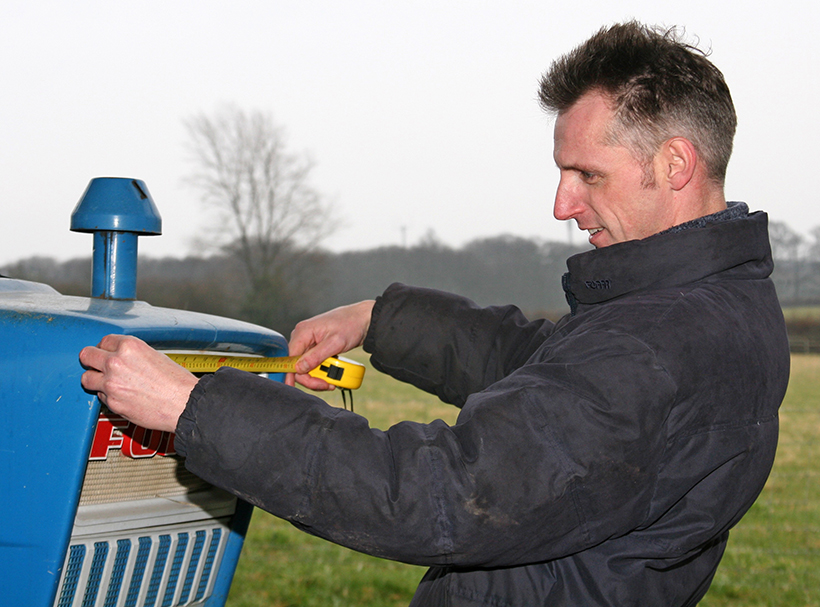
Here’s RC2’s Craig Varley measuring the front grill of our Ford 5000; one of the first steps taken during the production of the scale model.
Successful launch
The first Ford Force 5000 model was released in 1973, fitted with a safety cab, steer-o-matic steering and a pick-up hitch. At that stage, Britains was concentrating mainly on the production of models of the then current tractors, and that continued for many years.
However, things changed significantly in 2007, when the Heritage Range introduced the first of its ‘Vintage Tractors’, the Ford 5000 (model 42196). Although now discontinued by Britains, the Ford 5000 has proved enduringly popular, with examples currently selling for anything from £30 to £60, for an original, boxed model.
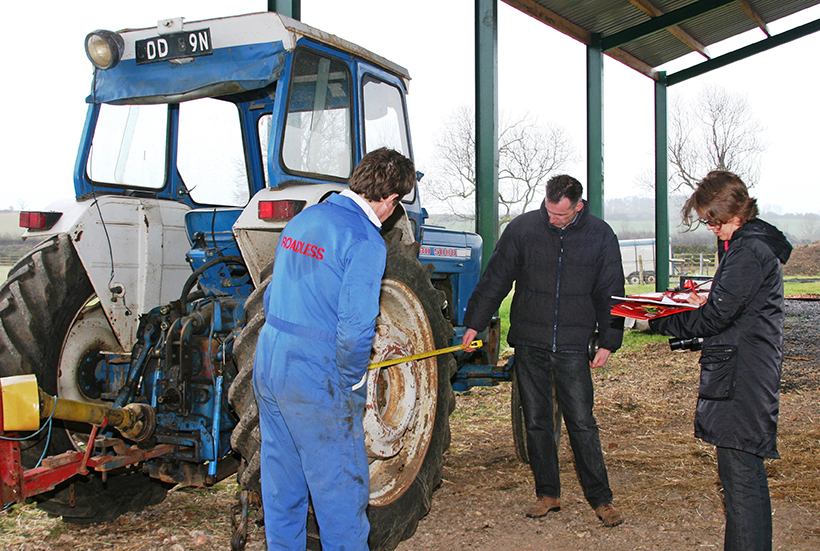
The 5000’s original wheels were carefully measured; attention to detail is vital for ensuring an accurate, scale model.
Of course, nowadays manufacturers drawings, CAD files and other information is readily available from most manufacturers to enable Britains and other model manufacturers to create prototype models. But, back in 2004 and 2005, when the Heritage Range was being developed, it wasn’t so easy to get access to the original drawings,
Because of the lack of hard data, the only way Britains could get the project off the ground was to find an actual tractor and then gather the necessary information the old-fashioned way, using a tape measure and taking photographs, and creating its own designs for a prototype model that way.
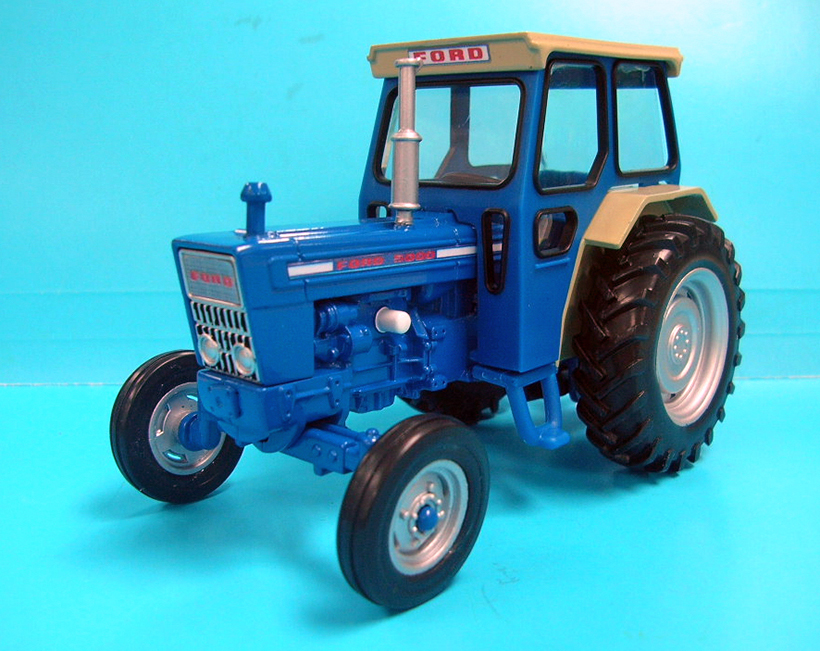
This is the ‘First Shot’ pre-production model.
This is how, back in March 2005, Jessica Waller and Craig Varley from RC2 – which owned Britains at the time – came to be at our Warwickshire farm, photographing and measuring-up our 1974 Ford 5000.
The Ford Force 5000 replaced the Pre-Force 5000, and was produced from 1968 to 1975. It was powered by a four-cylinder, 3,294cc engine producing 75hp, and most of the latest models came with a two-speed PTO. The introduction of the new Agricultural Cabs Regulations in 1970 saw safety cabs being fitted to all tractors, and the Ford 5000 was no exception.
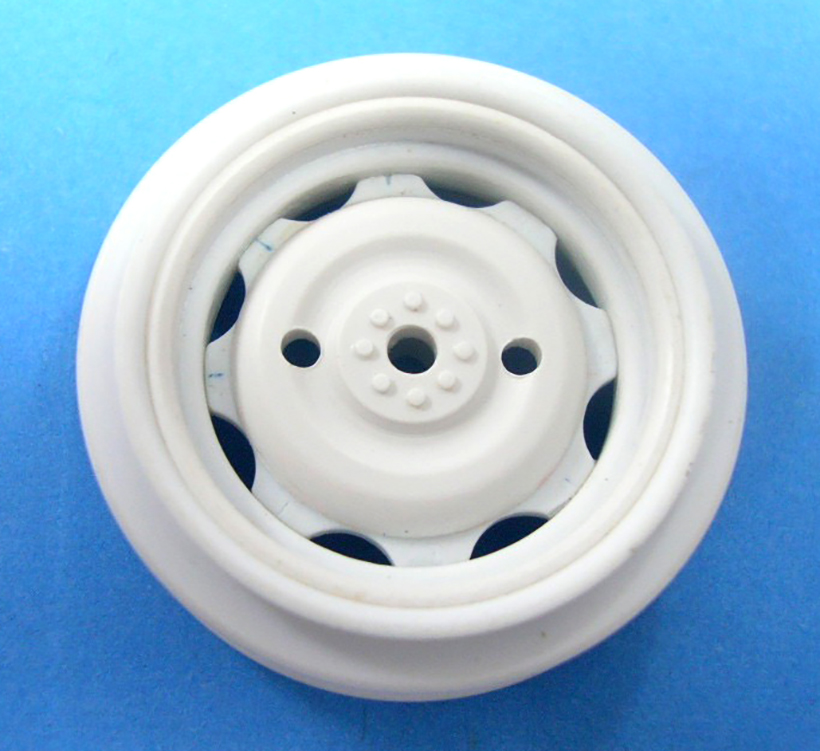
A close-up view of the prototype wheel.
A star is born
The tractor, which is still owned by us, spent its early working life on a small farm in Gloucestershire, before we bought it in 1998. Its low hours and pretty much original specification had led RC2 to contact Stephen, not to mention the fact that it had become quite well known. It was taken over to Ireland for the 2004 National Vintage Road Run and has also been featured in a number of magazine articles over the years.
The tractor was thoroughly measured and many photographs were taken. A detailed analysis was also made of old brochures and as much original, sales information as could be found, plus visits were made to a second Ford 5000 located in Devon. All this information was used to create a briefing file which, in turn, was sent to RC2’s Hong Kong-based engineering team.
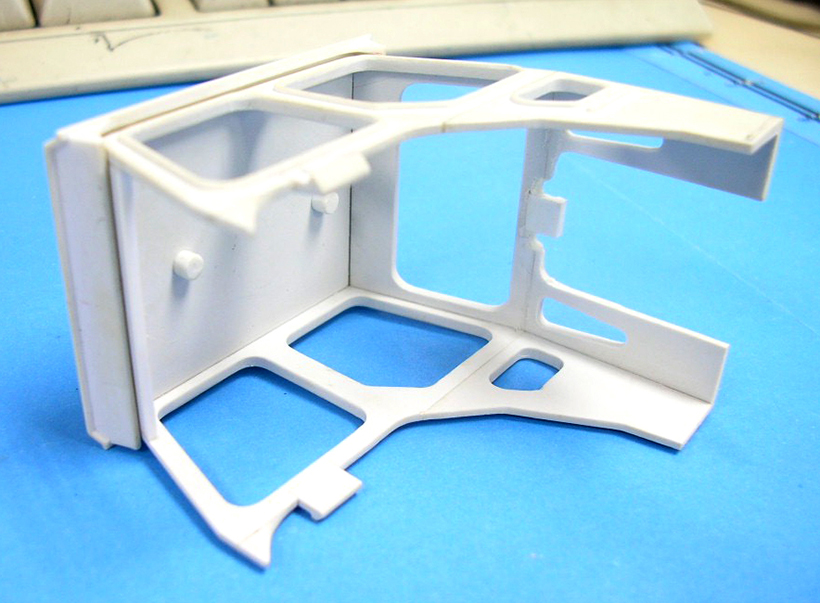
The prototype cab.
There the research was used to create a hand-made, 1/32nd-scale model of the tractor, which was made from resin and plastic, and was 1½ times the actual model size.
This prototype then travelled back and forth between Hong Kong and the UK several times, so that details and accuracy could be thoroughly checked then, once everyone was happy that it was as good as it possibly could be, the tooling moulds were produced. Diecast models are made from strong zinc-alloy castings, and a major cost of any new model is the tooling.
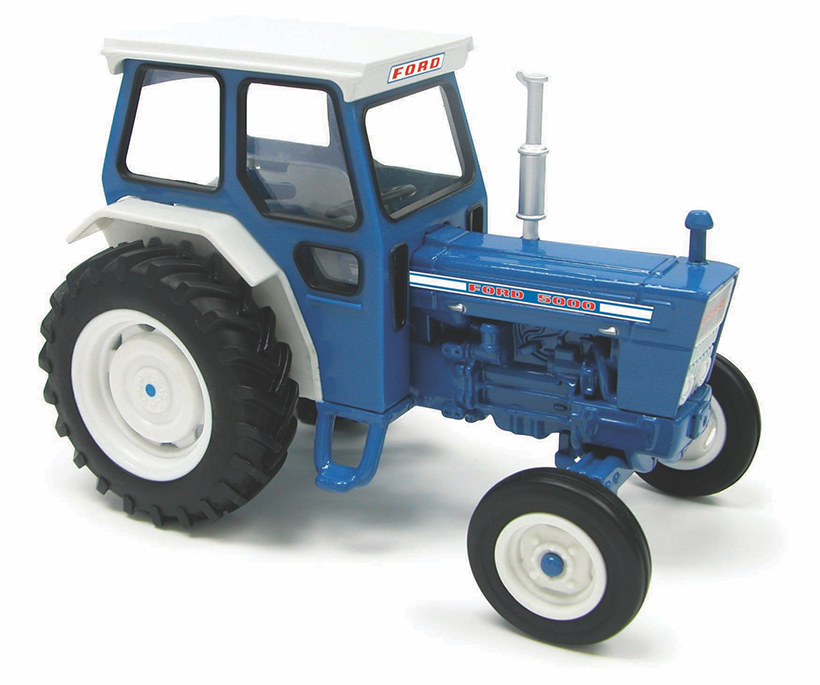
The finished result; Britains’ 32/1-scale model of the Ford Force 5000.
This stage took about three months to complete, after which a production prototype – called the ‘First Shot’ – was produced. This was then painted and the decals were applied preparatory to more checking and then approval. Once the RC2 team was happy with the finished result, it was signed-off ready for full-scale production to start.
Appealing toys
Some diecast producers sell their models as collectibles, with a purely adult market in mind, but RC2 and Britains sell their models as ‘toys, which will have great appeal to collectors’. So, the model underwent stringent safety testing to ensure it complied with toy safety regulations, and finally hit the shelves in 2007. The first of several production runs sold out in record time, with many collectors having pre-ordered their examples and, to this day, it remains an extremely popular collectible.
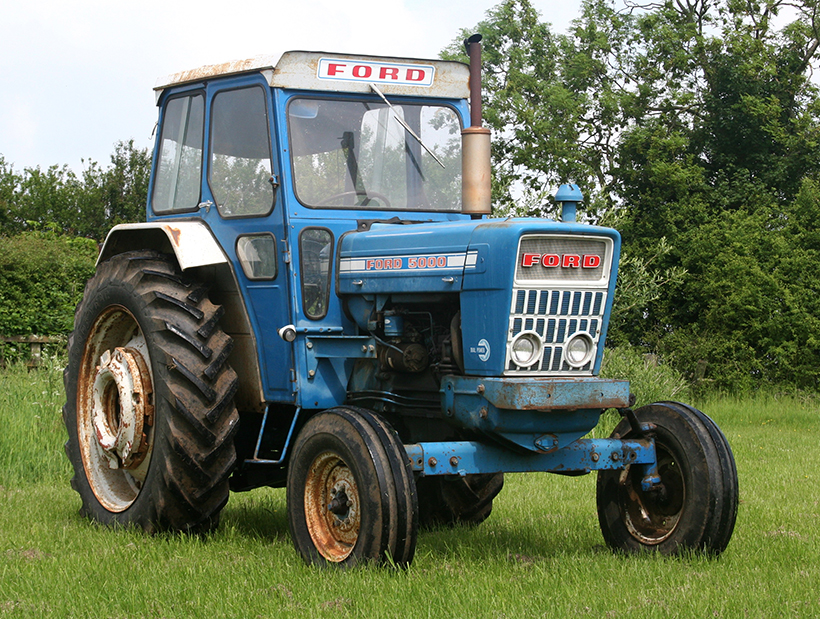
Launched in April 1968, the Ford Force range was code-named the 6Y series, and the power-boosted, 75hp Ford 5000 was the flagship model.
The model itself is beautifully made; its skid unit was updated using the 2005 measurements and, with dimensions of approximately 11x6x8cm, it features a fully-removable cab and is equipped with a rear hitch. The model originally retailed at around £11.99, and was followed by other members of the Ford tractor family, including a Ford 6600 and Ford 7000 in September 2007, plus a Ford 7600 1/32nd-scale in October 2007, each of which utilised the same body shell as the Ford 5000.
For a money-saving subscription to Ford & Fordson Tractors magazine, simply click here




